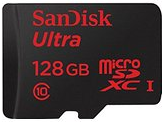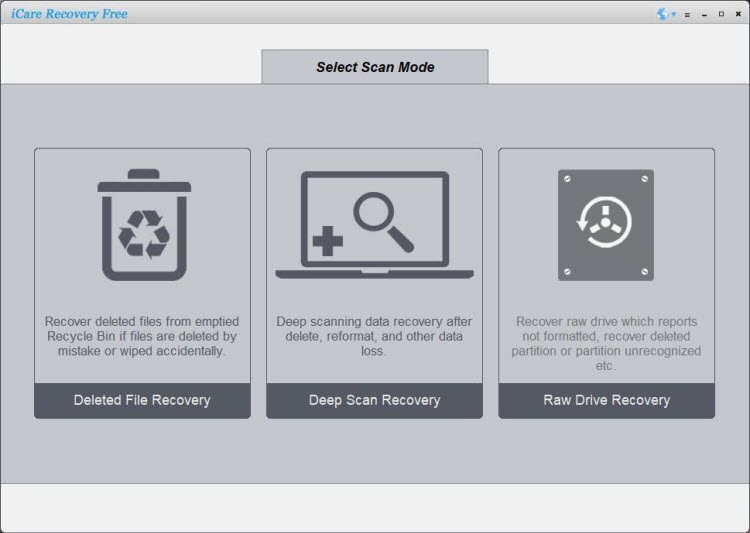Sandisk Ultra 128GB SD Card Format Recovery: How to Recover Lost Data

The SanDisk Ultra 128GB SD card is a popular storage device for cameras, smartphones, and other digital devices, known for its high speed, durability, and reliability. However, even the best SD cards can experience data loss due to accidental formatting, corruption, or improper handling. Losing precious photos, videos, and documents can be stressful, but the good news is that data recovery is often possible with professional tool like iCare Recovery Free.
Understanding SanDisk Ultra 128GB SD Card
SanDisk Ultra 128GB SD cards offer high-speed performance, ideal for recording Full HD videos and transferring large files. They support speeds up to 100MB/s, making them efficient for both personal and professional use. Despite their robustness, no storage device is immune to data loss. Common causes include:
- Accidental formatting of the SD card
- File corruption due to improper ejection
- Virus or malware attacks
- Physical damage to the SD card
When a SanDisk Ultra 128GB MicroSD card is formatted by mistake or intentionally, all files on it appear to be deleted. However, the data is usually not completely erased, meaning recovery is possible if acted upon promptly.
What Happens When You Format a SanDisk Ultra 128GB SD Card?
Formatting an SD card essentially resets its file system, making it ready for new data. While this can help fix errors, it also makes all existing files inaccessible. There are two common types of formatting:
- Quick Format: Only the file table is cleared, leaving the actual data untouched. This makes recovery relatively easy.
- Full Format: Does not overwrites data sectors but would mark some data saving sectors to be off the accessible block if damaged, which makes recovery more challenging but still sometimes possible with specialized software like iCare Recovery.
Regardless of the format type, the key to successful recovery is to stop using the SD card immediately to prevent overwriting lost data.
Note: Low level formatted Sandisk Ultra SD card data cannot be recovered by any means. If you just have low level formatted the Sandisk ultra memory card, no matter microSD, sdhc, sdxc or cf card, data are gone forever.
Steps to Recover Data from a Formatted SanDisk Ultra 128GB SD Card
Recovering data from a formatted SD card requires specialized software designed to scan for lost files. One of the most user-friendly and reliable tools for this purpose is iCare Recovery Free. Here’s how to use it:
Step 1: Download and Install iCare Recovery Free
![]() Download and install it on your computer, but avoid installing it on the SD card you wish to recover, as this could overwrite lost data. (Visit the official iCare Recovery website icare-recovery.com and download the free version.)
Download and install it on your computer, but avoid installing it on the SD card you wish to recover, as this could overwrite lost data. (Visit the official iCare Recovery website icare-recovery.com and download the free version.)
Step 2: Connect the SD Card
Insert your SanDisk Ultra 128GB SD card into a card reader and connect it to your computer. Ensure the card is recognized by your system.
Step 3: Launch iCare Recovery Free
Open the software and select the type of recovery you need. For formatted SD cards, choose “Deep Scan Recovery.”
Step 4: Select the SD Card
From the list of drives, select your 128GB SanDisk Ultra SD card and start the scanning process. The software will search for recoverable files, including photos, videos, and documents.
Step 5: Preview and Recover Files
Once the scan is complete, iCare Recovery Free allows you to preview the recoverable files. Select the files you want to restore and save them to a safe location on your computer, not back to the SD card.
Why Choose iCare Recovery Free?
iCare Recovery Free is one of the most trusted recovery tools for SD cards, including the SanDisk Ultra 128GB. Key benefits include:
- User-friendly interface: Even beginners can easily recover data.
- High recovery rate: Capable of recovering formatted, deleted, or corrupted files.
- Supports multiple file types: Works with photos, videos, documents, and more.
- Safe to use: Does not overwrite existing data during recovery.
Tips to Prevent Data Loss
- Regularly back up your data to a computer or cloud storage.
- Avoid removing the SD card while files are being transferred.
- Use a high-quality card reader to reduce the risk of corruption.
- Run antivirus scans to prevent malware from affecting your SD card.
- Format the card only when necessary and use the quick format option when possible.
Also read: How to recover formatted Sandisk sd card, sandisk sd card formatted by mistake, recover formatted sd card
Frequently Asked Questions (FAQ)
1. Can I recover data from a formatted SanDisk Ultra 128GB SD card?
Yes, using data recovery software like iCare Recovery Free, you can recover most files from a formatted SanDisk Ultra 128GB SD card, especially if you stop using the card immediately after formatting.
2. Is iCare Recovery Free safe to use?
Yes, iCare Recovery Free is safe to use. It does not overwrite existing data and allows you to recover files without harming your SD card.
3. What types of files can iCare Recovery Free recover?
iCare Recovery Free can recover various file types including photos, videos, audio files, documents, and other common formats from formatted or corrupted SD cards.
4. How long does it take to recover files from a 128GB SD card?
The recovery time depends on the number of files and their sizes. Typically, a full scan may take between 30 minutes to a few hours. Using iCare Recovery Free, you can preview files during the scan to recover important files faster.
5. Can I recover files if I did a full format?
Yes, but recovery from a full format is more challenging because some data sectors may be overwritten. The success rate is higher if you stop using the SD card immediately and use a professional recovery tool like iCare Recovery Free.
Conclusion
Losing data on a SanDisk Ultra 128GB SD card or 64GB microSD card or CF card can be alarming, but thanks to tools like iCare Recovery Free, most data can be recovered quickly and safely. Whether it’s due to accidental formatting, file corruption, or other issues, following the proper recovery steps can restore your photos, videos, and documents effectively. Always remember to back up your important files and handle your SD card carefully to minimize future data loss risks.
Related Articles
- sandisk sd card formatted by mistake recover data
- recover sandisk sd card data after format android
- retrieve files from formatted sandisk micro sd card windows 11
- formatted sandisk memory card data recovery tool
- recover formatted sandisk sd card
- how to recover formatted sandisk sd card without backup
- sandisk ultra 128gb sd card format recovery
- sandisk extreme pro 256gb sd card formatted file recovery